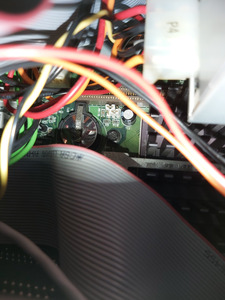First post, by DoutorHouse
- Rank
- Newbie
Been restoring/reassembling an old IBM Aptiva 2134-440 I bought second-hand and I could really use the help of the experts here as i have no clue about what jumpers setting i should change and i don't wanna mess up the motherboard!
My computer has a Pentium 133Mhz processor and I'm gonna change it to a 166MHz or 200MHz one (when i actually find one). Problem is i have no clue as to what jumper settings to change. I got a copy of the technical manual but the information didn't help me much. I know the J35 jumper is already set for the correct CPU Input Clock Speed, so that's pretty straightforward (66 MHz for Pentiums 100/133/166/200, 60MHz for Pentiums 120/150 and it can also use 50 and 55mhz for other processors, but i have no idea of what kind).
The motherboard supports 100/120/133/150/166/200MHz pentiums. Manual is here:
http://ps-2.kev009.com/pccbbs/aptiva/94h5153.pdf
Now, there's also two other jumpers, marked as JP10 and JP11 to change the External/Internal Clock Speed Ratio.
These have four different possible positions and i have no idea how i should change them accordingly to other processors speeds. I looked for some more info on the internet and managed to find this but i'm still confused about the info on CPU multiplier selection (end of page):
https://stason.org/TULARC/pc/motherboards/I/I … 4-2176-A-1.html
Apparently, there's two different settings for 60mhz, one for 50mhz and one for 66mhz. Manual also mentions 55mhz but it's not listed here.
Someone would be so kind as to tell me which setting i should use for the six different processors (so I might consider downgrading it or upgrading it)? Thank you so much for any help on this!
